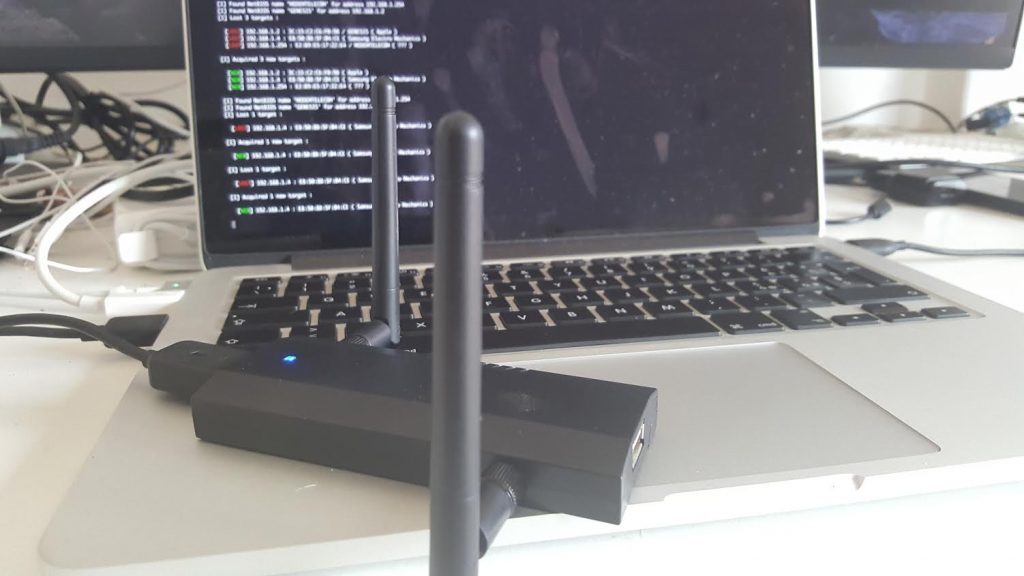Whether a security expert or an enthusiast, you have undoubtedly heard about the WiFi Pineapple, an excellent device for checking poor cyber security. However, you may wonder how to use WiFi Pineapple if you have never used it before.
Now while the WiFi Pineapple has gained popularity for being largely used by hackers, it is undoubtedly an excellent tool to check where your security is lacking. Cyber security is among the first reasons why the device is so popular.

How to Use WiFi Pineapple
The WiFi Pineapple provides WiFi users with Internet access.
- Wired Internet connection – Internet access through an Ethernet port
- Internet connection sharing – Share Internet connection from a computer
- USB tethering – Internet access by using a USB Ethernet adapter
- WiFi Client mode – Internet access from a nearby access point
Using WiFi Pineapple
Wired Internet connection
One excellent way for you to use and gain Internet access with the WiFi Pineapple device is through its Ethernet ports. On the WiFi Pineapple device, there is a WAN port and a LAN port accessible by the USB ETH port. The USB ETH port connects the host device to the LAN.
Internet connection sharing
Another excellent option for configuring the WiFi Pineapple device is sharing an Internet connection from your personal computer, for example, a Windows-supporting one. It would be best if you connected the WiFi Pineapple LAN port to the Windows PC host. With the device providing the users with Internet access from a host PC, the WiFi Pineapple extends MITM functions through applications like packet analyzers and auditing frameworks.
USB tethering
The WiFi Pineapple is a versatile device that provides an Internet connection from various sources, even USB Ethernet adapters. Most Android devices can emulate a USB Ethernet adapter, thus sharing an Internet connection with other devices. You may check if your Android device has this capability by selecting “Tethering” and “Portable hotspot” from the settings app.
WiFi Client mode
The WiFi Pineapple device can also obtain an Internet connection from an access point in its vicinity. Internet access can be from a wireless router, personal hotspots, and smartphone WiFi tethering. However, the connection may not be as strong as the previously mentioned configurations.
WiFi Pineapple Overview
Network security administrators can do penetration tests using a WiFi Pineapple, a wireless monitoring platform from Hak5. Pen tests are a sort of ethical hacking where white hat hackers look for security flaws that a hacker could take advantage of. Old Western films featured white hats for the good guys and black hats for the bad ones, hence the names “white hats” and “black hats”.
Man-in-the-middle (MITM) attacks can also be carried out via a WiFi Pineapple acting as a rogue access point (AP). A MITM attack is when a third party deceives two parties into thinking they are directly talking with each other by secretly intercepting and relaying messages between them.
Read more: How to Control Devices Connected to Your WiFi

How the WiFi Pineapple Works
The engineers at Hak5 initially developed the Pineapple to assist network administrators with network security audits and to conduct pen testing. Network engineers can hack their own networks using the AP, which some users believe looks more like a spider than a pineapple, to find flaws and implement defenses against possible attackers.
A pineapple is referred to as a honeypot when it is utilized for pen testing between the user’s laptop and the network to check the data transfer. The WiFi Pineapple’s controller eavesdrops on data being passed back and forth between the WiFi network and wireless devices.
Penetration testing
The WiFi Pineapple is significant partly due to its user-friendly interface and affordable price. The WiFi Pineapple’s free-to-download PineAP pen testing module suite provides tools for recording, reporting, tracking, surveillance, and practicing MITM attacks.
It is a readily available tool that might provide some potentially inexperienced hackers access to some strong hacking skills. It is a useful tool for white hat hackers to assess security systems for the same reason.
It is a strong, easily usable tool depending on the user’s intentions. Although it is a tool with the potential to be misused, it also has enormous potential to be used to stop misuse.
Hacking
A fake service set identifier (SSID) that closely resembles the network’s real name can be projected by the WiFi Pineapple once it has established a connection to the network it is monitoring.
The user will not be aware of the WiFi Pineapple’s presence unless they check their device’s settings and happen to detect the rogue AP.
Due to the WiFi Pineapple’s ability to be managed remotely over the Internet, it is even feasible to stay connected while being physically separated from it.
Also read: How to Configure Router to Use WPA3
How to Protect Against WiFi Pineapple Attacks
As we have mentioned, besides the WiFi Pineapple device being popular among cyber security experts and enthusiasts, it is also used by hackers. Unfortunately, hackers are using the WiFi Pineapple device to spy on and steal the sensitive data of Internet users. Because of the threat these hackers pose, it is important to protect yourself.
- To avoid getting your info stolen by hackers, avoid connecting to public WiFi; it would be best if you did not connect to devices that are not yours
- You can protect yourself by turning off the WiFi in your home when you leave the house; you should avoid letting your device scan for SSIDs when changing locations
- Use a VPN – a VPN service can be a great help in protecting you against hacking attacks as it encrypts your online data; you will not have to worry about your data being visible on the Internet
Conclusion
In conclusion, even though the device is small and with a silly name, it packs serious power, which is why so many cybersecurity experts use it to check for weaknesses in Internet connections.
Unfortunately, the device is also popular among hackers who use it for nefarious purposes such as spying and stealing personal data. However, as long as you know how to use WiFi Pineapple, you can detect security issues and implement appropriate fixes.